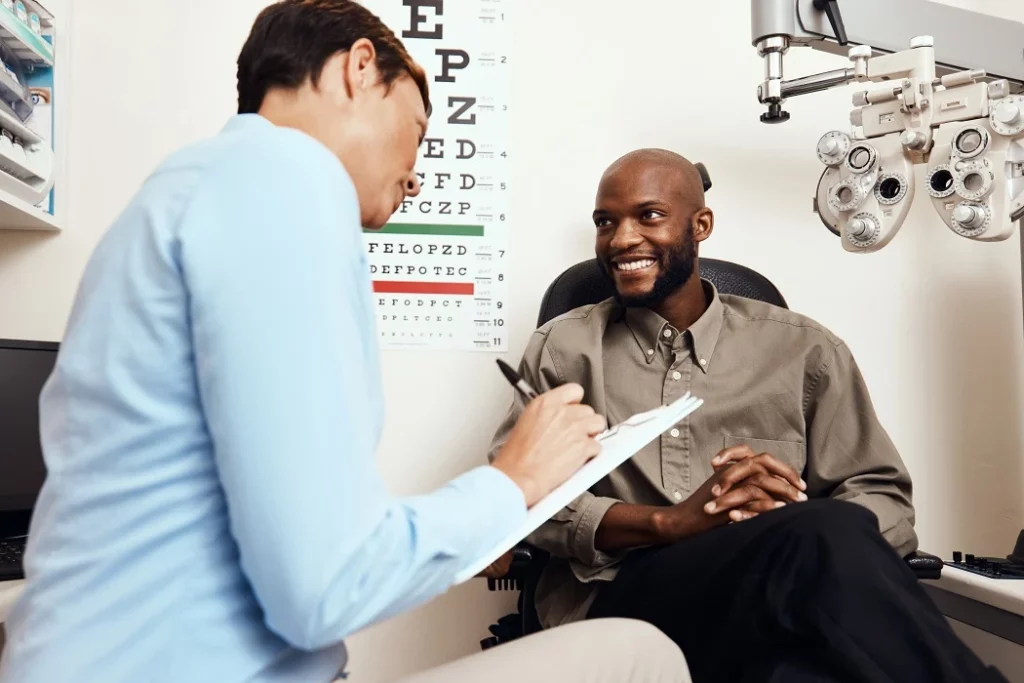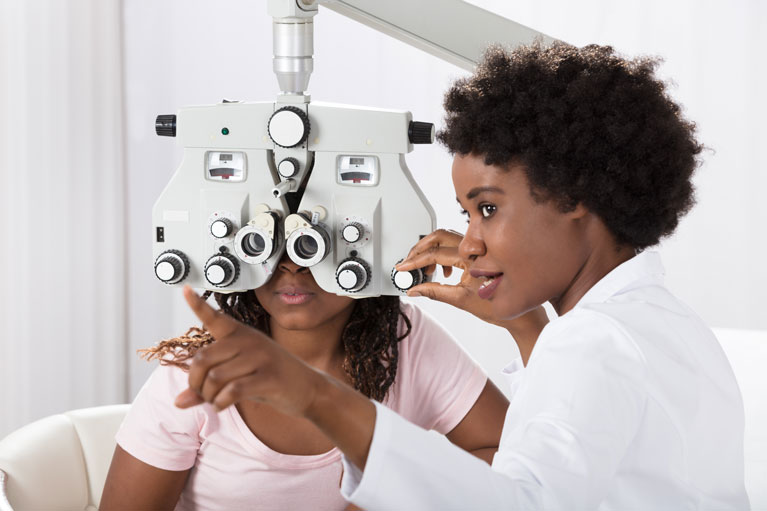The Comprehensive Eye Exam: What to Expect Throughout Your Visit to the Eye Doctor
A check out to the eye physician for a comprehensive eye exam is even more than a regular examination; it is a critical step in safeguarding your aesthetic wellness. From the preliminary discussion of your case history to the precision of the visual skill test, each part of the examination serves a particular objective. What exactly occurs during the eye wellness evaluation, and exactly how does it affect the prescription process? Recognizing these components is vital for those who desire to keep optimum sight. As we explore each part, the significance of follow-up referrals will certainly likewise end up being clear.
First Consultation
The initial appointment during an eye examination acts as an important structure for understanding a patient's aesthetic health demands. This phase establishes the tone for the whole assessment process, allowing the optometrist to collect crucial info concerning the individual's case history, way of living, and particular vision worries. By meticulously reviewing any type of pre-existing problems, medicines, or previous surgical treatments, the eye treatment specialist can customize the exam to resolve individual requirements successfully.

Additionally, the first appointment is an opportunity for individuals to articulate any worries or questions, promoting a collaborative connection with their medical care copyright. This communication not only ensures that the individual feels notified and comfy but likewise encourages them to take part proactively in their eye health administration. Jointly, these discussions allow the eye doctor to develop a personalized assessment strategy, making sure ideal treatment and specific diagnosis.
Aesthetic Acuity Examination
Beginning the core elements of an eye assessment, the aesthetic acuity examination is developed to assess the sharpness and clarity of a patient's vision. This essential evaluation helps identify just how well a person can recognize letters or signs at a standardized distance, usually making use of a Snellen graph (Eye Doctor). The graph consists of rows of letters that reduce in size inside out, with the person positioned at a normal range of 20 feet
During the test, the patient is asked to cover one eye and read out loud the smallest line of letters they can see plainly. This procedure is duplicated for the other eye. The results are taped as a fraction, with 20/20 vision indicating typical aesthetic skill-- where the patient can see at 20 feet what an individual with typical vision can see at that range.
The aesthetic acuity test likewise determines possible refractive mistakes such as astigmatism, nearsightedness, or hyperopia, which could demand restorative lenses. By developing a baseline of visual performance, the examination is an indispensable diagnostic device that aids the eye treatment specialist in creating a proper treatment plan tailored to the person's distinct aesthetic demands.
Eye Wellness Evaluation
Complying with the aesthetic acuity examination, a detailed eye health analysis is conducted to make certain the total health of the eyes. This important section of the eye exam entails a thorough assessment of both the external and inner frameworks of the eye.
Following, interest shifts to the interior structures. Through using ophthalmoscopy or fundus digital photography, the retina, optic nerve, and blood vessels are thoroughly examined. This step is vital for determining problems such as retinal detachment, glaucoma, or diabetic retinopathy. In most cases, pupil dilation is done to enhance exposure of the interior eye structures, although this may lead to short-term light level of sensitivity for the client.
Furthermore, intraocular stress is measured to screen for glaucoma threat. This is usually done utilizing tonometry, which can detect elevated pressure levels that may recommend prospective damage to the optic nerve. Jointly, these analyses develop an extensive evaluation to maintain ocular health and wellness.
Refraction and Prescription
Refraction is an innovative procedure conducted by eye treatment experts to identify the precise lens power required to fix refractive mistakes such as nearsightedness, astigmatism, hyperopia, and presbyopia. The goal of this procedure is to examine just how light bends as it passes with the eye, enabling the professional to establish whether corrective lenses are necessary for enhanced visual acuity.
During the refraction process, the patient is asked to check out a phoropter, a gadget that has different lenses. The practitioner will systematically transform these lenses and ask the client to contrast quality in between options until the ideal possible vision is achieved. This procedure is crucial in crafting a precise prescription that defines the suitable lens power for spectacles or contact lenses.
The prescription stemmed from this treatment not only optimizes vision but likewise works as a foundation for choosing suitable corrective eyewear. It is important to ensure that prescriptions are consistently updated, as adjustments in vision can occur gradually, stressing the value of regular eye evaluations. This meticulous interest to detail assists maintain clear, comfy vision in look at this now day-to-day live.
Follow-Up Suggestions

During a follow-up check out, the eye medical professional will carry out a series of examinations to review visual skill and look for any type of adjustments in vision that could demand an upgrade to the prescription. In addition, the follow-up provides an opportunity to discuss any pain or concerns experienced with present eyewear. Modifications can be made to make certain convenience and efficacy, whether through lens modification or frame modifications.
For clients with continuous problems such as glaucoma, diabetes-related eye concerns, or macular deterioration, more constant follow-ups may be necessary. These appointments are critical for managing and potentially slowing the progression of eye illness. Sticking to these recommendations can dramatically add to preserving aesthetic health and avoiding long-term difficulties.
Final Thought
The detailed eye examination is a necessary process for preserving visual health, encompassing a comprehensive analysis of medical history and vision find out here now issues. Trick parts include the visual acuity examination, which evaluates vision clarity, and the eye health and wellness analysis, which examines the total problem of the eyes.
A see to the eye doctor for a thorough eye examination is even more than a regular exam; it is an essential step in guarding your visual wellness.Kicking off the core elements of an eye exam, the aesthetic acuity test is made to analyze the sharpness and quality of a patient's vision.Following the visual acuity test, a detailed eye health and wellness assessment is carried out to guarantee the general health of the eyes. These check outs enable the eye treatment specialist to monitor adjustments in vision, update prescriptions, and assess the general health of the eyes. Secret elements include the aesthetic acuity test, which examines vision clarity, and the eye wellness assessment, which analyzes the overall condition of the eyes.